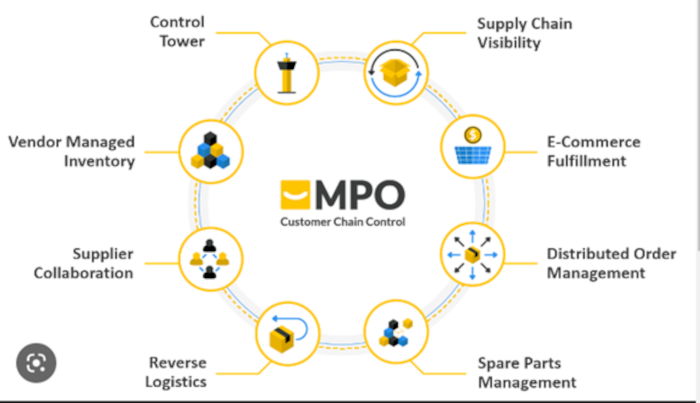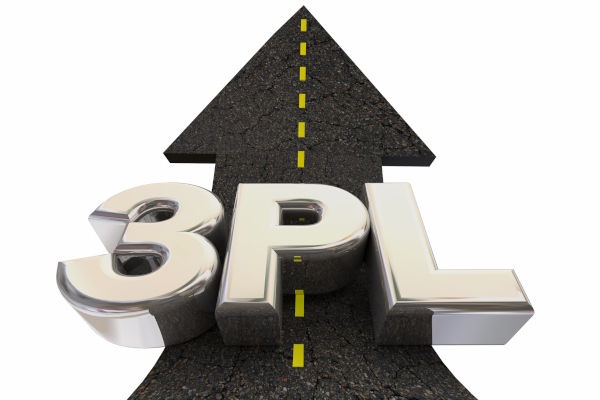Third-party logistics providers (3PLs) play a vital role in outsourcing the distribution and fulfillment phases. 3PLs have always been an essential part of supply chain management. Still, their importance has only increased as companies have had to adapt to a more globalized landscape for their product sourcing, production, and customer base.
The utilization of a 3PL may aid in the development and growth of companies that are not primarily logistic fulfillment providers. As a result, businesses commonly resort to 3PLs when they outgrow their initial facilities and infrastructure. Enhanced transportation services are in high demand due to the growth of this sector. For the sake of efficiency and economy, many small and medium-sized e-commerce businesses have begun working with 3PL firms to outsource their supply chain management.
What is a 3PL?
A business that offers logistics management services to other companies is known as a third-party logistics provider, or 3PL. 3PLs handle import and export compliance, customs clearance, and the transportation and storage of commodities.
A 3PL might, in some circumstances, offer value-added services, including packaging, assembly, and inventory management. As a result, businesses can save time and money and access the knowledge and expertise of a company specializing in this field by outsourcing their logistical needs to a 3PL.
What is orchestration?
Executing a more complex workflow or process requires orchestration, which is managing and coordinating numerous computer systems, applications, and/or services. These procedures may include several automated tasks and may involve several different systems.

Source: https://www.mpo.com/blog/8-orchestration-solutions-for-competitive-advantage
By streamlining and optimizing the execution of routine, repeatable processes, orchestration aims to make it easier for data teams to handle challenging jobs and workflows. As a result, time may be saved, efficiency can be improved, redundancies can be removed using orchestration whenever a process is recurring, and its activities can be automated.
How to build a robust and scalable 3PL integration?
The key to survival in today’s fast-paced, competitive industry is orchestration and automation. All 3PL-based fulfillment operations stand to benefit greatly from AI/ML-powered 3PL logistics solutions, which stand to increase efficiency via increased speed, accuracy, and expertise. Building the integrations necessary to maintain a smooth flow of goods from A to B and beyond is difficult.
Special problems need creative answers. In addition, time and money might be wasted if you make mistakes while integrating data into your supply chain. In order to keep your supply chain running smoothly, be sure to follow these three best practices for 3PL data integration:
1. Ensure flexibility in data architecture
Before putting a 3rd party logistics integration service or an off-the-shelf solution into action for your company, check to see whether it satisfies your company’s needs. For instance, it could take some time for the needed data formats and mapping criteria of the solution to be compatible with your company’s operations and your company’s data architecture. You must perform an in-depth cost-benefit analysis before making any changes to the data architecture or procedures of your company to satisfy the prerequisites imposed by a tool regarding its required format and mapping.
2. Examine critical functions
Examine your most critical company functions and identify which areas need synchronization. Here is the possible integration roadmap to help spark some ideas:
Order fulfillment. This encompasses everything from a customer’s first inquiry at the point of sale to when the goods arrive at their door. Sometimes, it refers to the specific distribution process or the logistics role. It may also be seen as a more extensive term for how businesses handle customer requests.
Inventory visibility. Integrate the multiple warehouses between you and your 3PL suppliers with your storefront and enterprise resource planning (ERP) software.
Updates to items or products. Your 3PLs should keep your item catalog current, including the right SKUs—returns processing. Integrate your 3PLs with your return merchandise authorization (RMA).
Arriving shipments. Examples of what have to be coordinated with your 3PLs include inbound shipment requests, purchase order (PO) imports and exports, and shipment receipts.
Remember that you can deal with some things at a time. However, this shift will be much more manageable if it is done in stages.
3. Checklist for 3PL orchestration’s initial integration
Before starting the integration process, you must have a clear vision for your 3PL system. Refer to this checklist to get going:
Review your operational procedures. Orders, inventory, catalogs, and inbound shipments are the four categories into which you might divide your company activities to automate order fulfillment and inventory management.
Decide which manually transferred data can be mapped and which can be automated. Determine the critical data transfers that must be 100% correct and completed on time, as well as the total number of manual entry errors that are currently occurring.
Make a measure of return on investment. Take note of how many full-time staff and hours are required to support manual procedures. You will then have a benchmark for comparison once your integrations are operational.
Choose an integration approach. On the other end of the scale, unique integrations built from the start can be expensive and time-consuming to handle efficiently. The majority of pre-built native integrations, on the other hand, are only capable of point- to-point, universal interfaces. As a result, they cannot handle additional endpoints or use cases.
Benefits of 3PL integration
Products are delivered considerably faster when a company combines its supply chain with a 3PL provider. The benefits of integrating 3PL are:
Aids in maximizing the advantages of experience and knowledge. A 3PL can offer a degree of expertise and knowledge that most businesses will need access to internally. For example, a company working with a reliable 3PL can anticipate having access to the following:
● Extensive understanding of shipping rules and laws.
● More knowledgeable and experienced drivers.
● Inside knowledge of delivery windows and receiver locations.
● Methods that are streamlined, expertly developed, eliminate waste and save money.
● Quicker and more precise paperwork.
These advantages can significantly boost operational efficiency and continuously add value to a shipper’s supply chain.
Reduces or eliminates the costs associated with maintaining a fleet of vehicles. Maintaining a fleet of vehicles can be very expensive for companies that need to export, utilizing more oversized vehicles like tractor-trailers. In addition, an internal vehicle fleet typically entails significant expenses in tools, upkeep, training, fuel, taxes, inspections, and safety gear.
These investments have already been made by a 3PL as a part of their fundamental business strategy. They make these substantial capital and maintenance commitments so their clients can do without having to. They can also employ strategies like LTL (less than truckload) shipping to further stretch these resources.
Provides more personalized and scalable services. Another essential benefit of employing a 3PL is its capacity for adaptation and scaling. Flexibility is crucial in improving logistics performance. Large and unexpected swings in demand are expected in the e-commerce era for many organizations, and a company that depends on its logistics capabilities may need help to deliver a crucial order on time. When a firm works with a 3PL, it will have an easier time expanding its services as required and can coordinate with the 3PL to ensure it is well-prepared for peak times.
Offers more effective last-mile solutions. Logistics for the last mile have always been notoriously tricky to master. However, when customers demand shipments arrive at their doors within minutes, it has become more complex and significant in the age of e-commerce. Finding a 3PL specializing in last-mile solutions is simple for businesses requiring last-mile logistics. Additionally, 3PLs frequently offer consumer services in great demand as they have more resources to bridge the last mile in difficult-to-reach distant places.
Improves possibilities for overcoming challenges. Anyone who has worked in logistics knows how frequently a breakdown, a period of bad weather, a backed-up loading dock, or any of the numerous other things that may go wrong can occur. These difficulties can significantly disrupt the supply chain for a company without the capabilities of a 3PL and have negative knock-on implications.
These issues are standard stuff for a 3PL. A good 3PL will have backup plans to deal with frequent logistical difficulties, such as sending out roadside mechanics or rearranging other shipments to account for delays. That kind of peace of mind is difficult to put a price on.
Many organizations have discovered that it doesn’t make sense to dedicate time and money to in- house logistics in light of the many great 3PLs currently available. A competent 3PL may free up a company from logistics hassles so they can focus on their core expertise while utilizing the 3PL’s technology, network, and knowledge.
Integration is the next step for your 3PL management
Since third-party logistics will stay, it makes sense to ensure that all your interactions with your 3PL provider are quick and easy. One method of ensuring that orders are processed fast and error- free is through integration & automation. You can save time, money, and even your reputation by implementing a connection between your business and your 3PL provider by simply integrating your process with the 3PL provider.
Automation and integration should be a component of your logistics and operations to maximize your 3PL agreements. By doing so, you may address and resolve any problems before they cause your business operations to fail. Consider this a strategy for enhancing client satisfaction while assisting your company in reaching its most significant potential.
About the author:
Arindam Mukherjee is an IT supply chain architect and published author in leading supply chain publications. He can be reached at [email protected].
SC
MR


More Inventory Management
- How S&OP provides the answer to in-demand products
- Shining light on procurement’s dark purchases problem
- ISM reports that services sector sees continued growth in March
- Predicting stockouts: Enhancing FMCG resilience through data-driven insights
- ISM reports manufacturing sees growth in March, snaps 16-month stretch of contraction
- A New Model for Retailer-Supplier Collaboration
- More Inventory Management
Latest Podcast

 Explore
Explore
Topics
Procurement & Sourcing News
- How CPG brands can deliver on supplier diversity promises
- How S&OP provides the answer to in-demand products
- There is still work to do to achieve supply chain stability
- Blooming success: The vital role of S&OE in nurturing global supply chains
- How one small part held up shipments of thousands of autos
- Shining light on procurement’s dark purchases problem
- More Procurement & Sourcing
Latest Procurement & Sourcing Resources

Subscribe

Supply Chain Management Review delivers the best industry content.

Editors’ Picks





